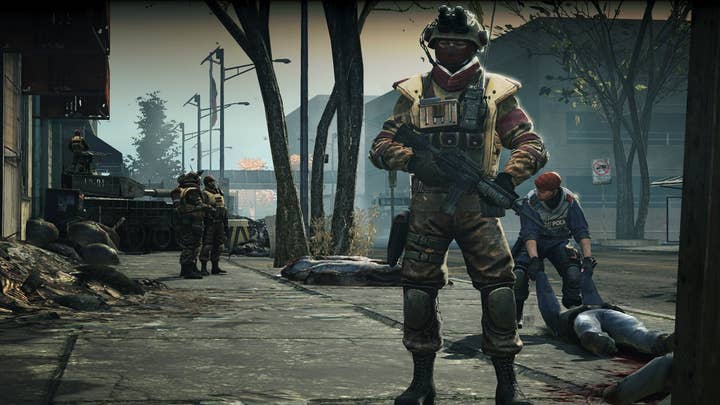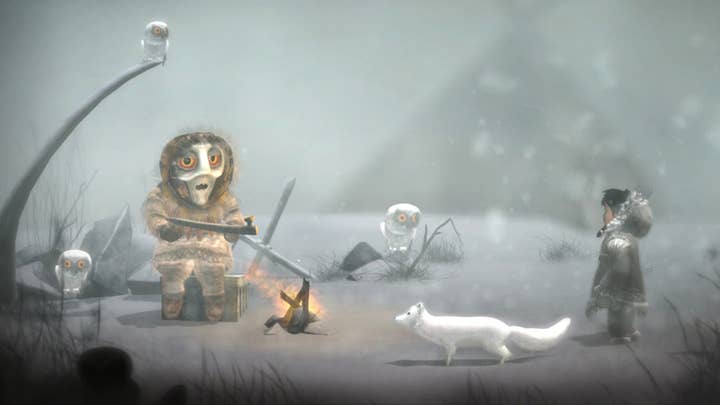Time for games to get cultured on culture
Far Cry 4 writer CJ Kershner says developers are getting better about depicting other groups, still have room to improve
It's not uncommon for game developers to incorporate cultures other than their own in games. Whether they want to provide players with an escapist fantasy against an exotic backdrop, a fresh perspective on a historical era, or a gritty vision of a conflict half a world away from their own, there often comes a point where developers find themselves reaching to portray a culture of which they have little or no first-hand knowledge.
Polyhedron Productions founder CJ Kershner will look at how a number of developers have admirably tackled that problem in a talk at the Montreal International Game Summit next week, and spoke with GamesIndustry.biz recently about his own experiences with conveying culture through games. Kershner has worked on a number of such titles, including Ubisoft's Far Cry 4 and Assassin's Creed: Syndicate, as well as both Homefront titles, first-person shooters that depict players as the resistance in a United States occupied by North Korean forces.
"There will always be constraints on any project, things you wish you could have done better"
"It is about doing the research," Kershner said. "For the example of Far Cry 4, my co-writers and I took that responsibility very seriously, and tried to do as much research as we possibly could. There will always be constraints on any project, things you wish you could have done better. Far Cry 4 is one in particular that I'm pretty proud of, because in terms of representing the culture of the Himalayas--and it was a non-specific place because it couldn't specifically be somewhere--I think we really tried to approach that with the respect it deserves."
Not every project turned out so well for him. Kershner pointed to the original Homefront as one where he felt more could have been done. While he researched North Korean culture just as he would other cultures for other projects, Kershner found his attempts to shape the subject matter hampered by the realities of large-scale development.
"Especially in the first game, it was something other members of the team and I had pushed for and we didn't actually achieve, which was to humanize the occupying force somewhat," Kershner said. "There were conflicting visions on how that should happen, and we lost that one."

As he explained, "One camp wanted them to be, essentially, faceless oppressors capable of unspeakable cruelty, which in turn would make them morally justifiable targets for the player/resistance's wrath... But some of us wanted them to be… I mean, 'nuanced' isn't exactly a strength of first-person shooters, but more than just a charging horde for the player to gun down."
Kershner pushed for sequences where the player would interact with the Korean People's Army regional commander that would show him to be more than an evil caricature, but those parts never made it into the game. In the end, his efforts to humanize the enemy in Homefront may have been most visible in collectible newspaper clippings hidden throughout the game.
On a larger team, the careful depiction of culture can become just another logistical problem of communication and getting everybody on the same page. It's one thing to bring a cultural consultant in, but who are they consulting with? Are they just speaking with the writers, or will they talk to the artists and marketing department as well? Are they only consulting with the leads, who then have to communicate their learnings down the chain? Kershner said in an ideal world, everyone on the team would be committed to depicting cultures respectfully and "saturated" in the world they're representing, but it's not exactly practical once a team gets to a certain size.
"With regards to mainstream games, these big budget, big team, what we would call AAA projects, that's always going to be a struggle," Kershner said. "I think there will be the tension between the desire to create an entertaining experience, to have a commercially viable project, and to have something that is reaching for meaning. And again, given the team sizes and international scope of development now, where you've got between two and seven studios working on this thing around the world, finding a cultural message to convey there is going to be really difficult."
"Lean in. If you're going to make a statement, don't do half-measures."
Kershner has been frequently disappointed in the way AAA games have handled other cultures. While he withheld the name of the game, he pointed to a recent and "politically very controversial" title that adopted a well-worn defense when questioned about its depiction of a certain culture.
"As a big game being made by a large international company, this is absolutely the safe, commercial thing to say," Kersher said, "but they unfortunately adopted [the line], 'We made it, it's a work of fiction. It's just a game.' And part of this talk is trying to get people away from that mindset. Lean in. If you're going to make a statement, don't do half-measures."
One good reason to lean in on a specific statement is that your game is going to make one anyway.
"All games communicate something, intentionally or not," Kershner said. "Whether that's Call of Duty and its very complicated portrayal of the military industrial complex, or whether it's something like one of the examples I'm giving [in my talk], Never Alone."
Developed by Upper One Games, Never Alone is a platformer based on a traditional story of the Alaskan Native Iñupiat people. Created in partnership with the Cook Inlet Tribal Council, it celebrates the Iñupiat culture, and includes more than half an hour of video interviews with elders, storytellers, and other members of the community that can be found and unlocked through gameplay. It's the sort of careful cultural treatment that Kershner expects will increasingly come from smaller studios.

"When you're working with the budgets and marketing [AAA publishers are], they have to round off the edges of what otherwise might be sharp subject matter," Kershner said. "But there are a lot of games out there that aren't from traditional development teams, or a traditional development environment, or even using traditional content, mechanics, etc. that can own what they're about."
That still requires time and resources, something small teams are often strapped for, but Kershner believes they will still find ways to create respectful, nuanced depictions of other cultures within their means.
"I think once a team has committed to doing their due diligence with regards to representation, it's something that a good producer can build into the timeline and budget," he said. "There is a plethora of research on whatever topic available both online and in print, but the reading should really only be viewed as the start. While I don't want to presume to speak for all consultants, it's been my experience that if you respect the knowledge and skills they have to offer and are transparent about the project, you can usually come to an arrangement. (Always pay your consultants.)
"The other approach I strongly advocate is 'building out capacity in communities,' as Elizabeth LaPensée aptly put it in the Indigenous Games Lightning Talks at GDC 2017. I want to encourage other developers to volunteer their time at workshops, schools and libraries, and through mentorship programs, to help unlock games as a method of creative expression for people who already have stories to tell."
Having said all that, Kershner believes the industry has steadily been showing improvement on this front.
"Obviously there's still a lot of work to be done and it really depends for each project," he said, "but I think if you're making something and you recognize now it's about a culture that is outside of your own, there are resources available, either in terms of doing on-site research, being able to meet with people of whatever group you're looking to depict, cultural consultants... There are services available that do mock reviews through that sort of lens. So it's getting better."
Disclosure: MIGS has a media partnership with GamesIndustry.biz, and is paying for our travel and accommodation during the event.
